Why do Men's Bits Shrink in the Cold?
How heavy is the Earth? How do snakes digest huge meals? Should I fear falling bullets? We take on these questions and more in this Naked Scientists Question and Answer show! We'll discuss the ideal hair for head lice, the mechanics of using a straw and why men's bits shrink in the cold! In the news we explore the link between jetlag and forgetfulness, discover a moon with an oxygen atmosphere, and a new technique to tell someones age by their blood. Plus, in Kitchen Science we find out why a full carton is much harder to shake.
In this episode

Shaking jars - why it is hard to shake a full carton of juice

02:05 - Jet-lag linked to forgetfulness
Jet-lag linked to forgetfulness
Psychologists working at the University of Berkeley have found that jet lag affects the brain's ability to retain facts long after returning to a more regular schedule.
 The researchers came to this conclusion after they had subjected a group of female Syrian hamsters to six-hour shifts in their circadian rhythms - which is the same as flying London to New York. They applied quite a tough regime to these hamsters, exposing them to this artificial jet lag twice a week for four weeks.
The researchers came to this conclusion after they had subjected a group of female Syrian hamsters to six-hour shifts in their circadian rhythms - which is the same as flying London to New York. They applied quite a tough regime to these hamsters, exposing them to this artificial jet lag twice a week for four weeks.
They also kept a control group of hamsters whose schedules remained unchanged. Lance Kriegsfield and his colleagues then put both sets of hamsters through tests which measured their ability to learn and remember simple tasks, such as locating hidden food.
As expected, the jet-lagged hamsters didn't perform as well as the control group. But what was surprising is that the jet-lagged ones continued to perform poorly even a month after their rhythms returned to normal.
They also found that the jet-lagged hamsters only had half the usual number of new neurons in the hippocampus area of the brain, which is crucial for memory and learning.It's already known that human frequent flyers and rotating night shift workers can suffer problems with their memory but what this study implies is that those problems could persist, even after they've settled into a more regular working pattern - at least we know that's true for hamsters, anyway.
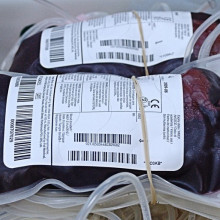
04:03 - Aged by blood
Aged by blood
In a move that could make a critical contribution to forensic investigations, scientists have developed a powerful new technique to predict a person's age from a sample of their blood.
Writing in the journal Current Biology, Erasmus MC Medical Centre, Rotterdam, researcher Manfred Kayser and his colleagues demonstrate that it's possible to age a blood donor with a precision of plus or minus nine years by studying the DNA present in the donor's T lymphocytes, which are a type of white blood cell.
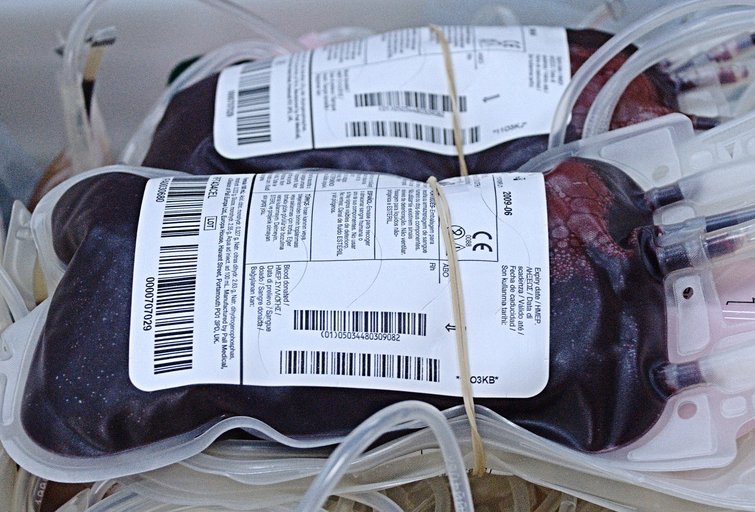 The technique makes use of an observation that T cells contain additional small, circular pieces of DNA known as signal joint TCR excision circles - sj TRECS for short. These are produced when the cells rearrange their DNA in order to mount a targeted immune response and there are usually a large number of them, although, critically, this number declines with age in a predictable fashion.
The technique makes use of an observation that T cells contain additional small, circular pieces of DNA known as signal joint TCR excision circles - sj TRECS for short. These are produced when the cells rearrange their DNA in order to mount a targeted immune response and there are usually a large number of them, although, critically, this number declines with age in a predictable fashion.
What the Dutch team do is to quantify the number of sj TRECS and then work out how much DNA is present overall in order to standardise the count. This enables them to make their prediction of the age of the person who produced the blood, which might be the only sample found at a crime scene.
According to Kayser, this is currently the most accurate ageing method currently available. But where it will really come into its own is that it can be combined with other DNA techniques that can now make predictions as to a person's appearance based on their genetic make-up. However, knowing roughly how old a victim or perpetrator is can be used to dramatically improve the power of such techniques because more accurate descriptions can be produced.
Commenting on the work, Kayser points out that "conventional DNA profiling applied in forensics can oly identify persons already known to the investigating bodies, because the approach is completely comparative. Hence, every forensic lab is confronted with cases where the DNA profile obtained from the evidence material does not match that of any known suspect tested, nor anybody in the criminal DNA database, and such cases therefore cannot be solved so far. In such cases, it is expected that appearance information estimated from evidence material will help in finding unknown persons..."
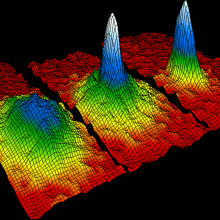
07:12 - Bose-Einstein condensate of photons
Bose-Einstein condensate of photons
Normally if you cool a gas the atoms exist in a variety of different energies, but Einstein and Bose predicted that if you cool certain types of atoms enough they start to condense into a single state all with exactly identical energy momentum etc., essentially a new state of matter.
 Although it was predicted in 1938 it wasn't achieved until 1995 when Eric Cornell and Carl Wieman cooled a very low pressure rubidium gas to about 170 billionths of a degree above absolute zero and they formed a bose-einstein condensate. This got physicists very interested as it is a fascinating example of a quantum mechanical effect, but at that temperature they could almost never be used for anything practical.
Although it was predicted in 1938 it wasn't achieved until 1995 when Eric Cornell and Carl Wieman cooled a very low pressure rubidium gas to about 170 billionths of a degree above absolute zero and they formed a bose-einstein condensate. This got physicists very interested as it is a fascinating example of a quantum mechanical effect, but at that temperature they could almost never be used for anything practical.
If you used light for this purpose the same thing could happen at much higher temperatures, however the problem is that you can't confine and cool down light, it tends to get absorbed by the walls far too quickly.
Jan Klaers and collegues have however got around this problem, they have trapped photons with two curved mirrors very close together only about 3.5 wavelengths, this means that the photons can only exist at certain wavelengths, and if those can't be absorbed by the walls or medium in between they stay in the cavity, and the photons of light can be cooled by interacting with dye molecules in between the mirrors causing the differences in state between them to slowly tend towards the temperature of the dye molecules. This has produced a Bose Einstein Condensate of photons for the first time, which is pretty impressive but what is more impressive is that they made it at room temperature, so it could be practical to use.
They haven't got to that point yet, but photon Bose Einstein Condensates may be able to produce high quality laser like light at wavelengths that are difficult to make lasers at, such as the ultraviolet, plus other more exotic applications that a new state of matter may open up.

10:14 - How HIV Kills Bystander Cells
How HIV Kills Bystander Cells
with Professor Warner Greene, University of California at San Francisco
Chris - Wednesday, December the 1st is going to be World Aids Day and 2011 actually marks the 30th anniversary of the discovery of HIV - the agent that causes AIDS. So it's very timely that this week scientists have announced that they have solved one of the big outstanding questions that surrounds HIV infection, which is why the virus is so damaging to the immune system. Professor Warner Greene is the Director of the Gladstone Institute of Virology and Immunology at the University of California in San Francisco. He's with us now. Warner, hello. Welcome to the Naked Scientists. First, can you give us a brief potted history of what actually happens during HIV infection? In other words, how does the virus get into cells and what's its life cycle?
Warner - Good evening, Chris. I'm happy to do that and it's too bad as we're celebrating the 30th World AIDS day that we haven't ended this epidemic but the number of new infections are in fact declining markedly throughout world which is very good news. In terms of the life cycle of HIV, HIV binds to the cell surface, micro-injects its RNA genome into the cytoplasm of the cell, and then converts that RNA into DNA, a double-stranded version of the DNA, hence, the name retrovirus - reverse flow of genetic information. The DNA is then integrated into our own chromosomes, the DNA is then expressed into new proteins and RNA which is packaged into new virions which bud from the cell, and starts the entire infection process over again.
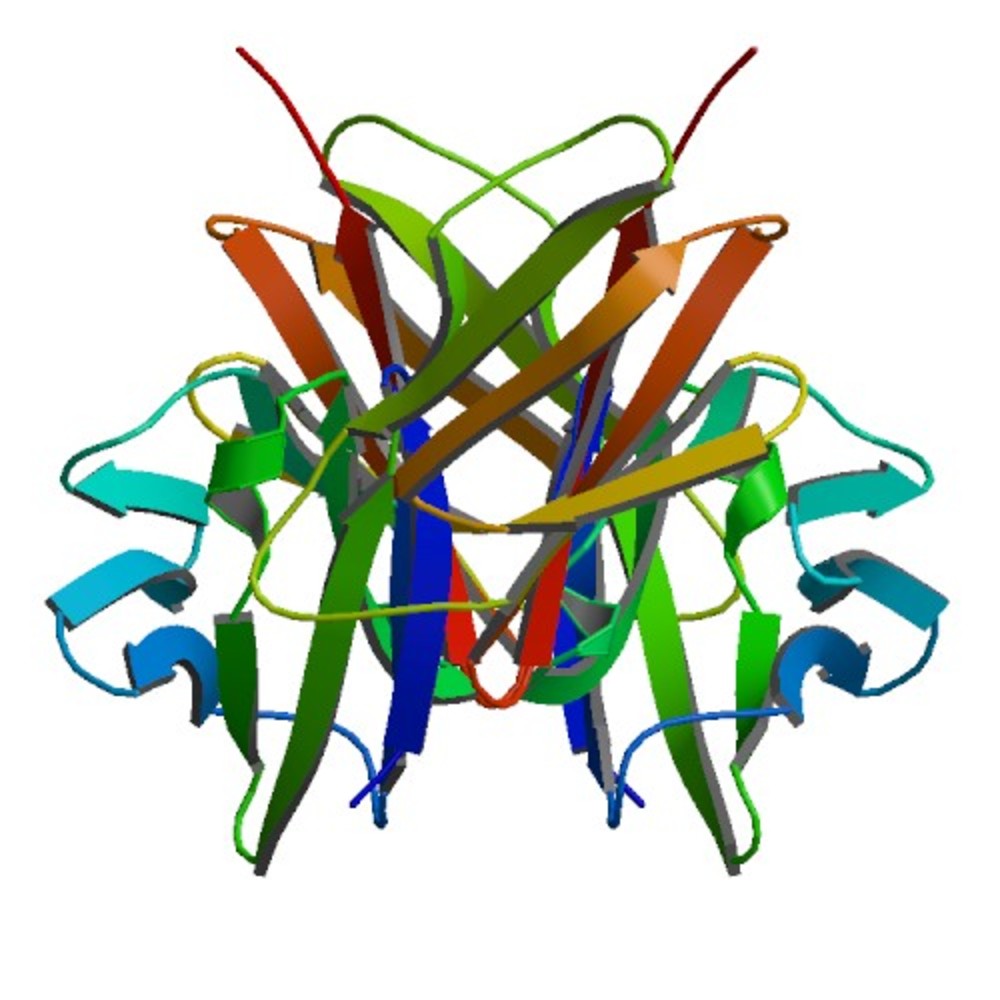 Chris - And the cells that are targeted are white blood cells, CD4, they carry that marker on their surface, T-cells, without which the immune system can't function properly. So one logical conclusion is the virus infects the very cells that orchestrate the immune response. So if you damage them then the immune system is harmed.
Chris - And the cells that are targeted are white blood cells, CD4, they carry that marker on their surface, T-cells, without which the immune system can't function properly. So one logical conclusion is the virus infects the very cells that orchestrate the immune response. So if you damage them then the immune system is harmed.
Warner - Correct. But the real question is, how are these CD4 T-cells dying? It was quite clear that the number of cells productively infected with HIV could not explain. In other words, direct killing could not explain the massive CD4 T-cell loss that occurs during HIV infection. Then a theory was advanced that it's not the directly infected cells but cells surrounding the infected cell, bystander cells, that are dying. Our study now shows for the first time that in fact, it is these bystander cells which are the principal cause of CD4 T-cell loss, but they themselves are becoming infect but in an abortive manner, an incomplete infection that arrests early after the virus begins the reverse transcription process.
Chris - How did you do this work? How did you prove that?
Warner - Well the first key was to use a primary lymphoid tissue. We used tonsil and in this tissue, we were then able to use each of the different types of new HIV drugs that interfere with precise steps in the viral life cycle. We were able to interrupt the life cycle with these drugs and ask whether or not, CD4 T-cell killing was blocked or not.
Chris - Ingenious. So, by adding a different drug that works on a different aspect of the life cycle, you interrupt at that stage, see if the cell dies. If it doesn't die, that tells you that the effect that you see, the bystander death, in an infected patient must lie downstream of that blockade. If the cell does die, it's upstream of where the drug works and that confines a bit of the viral life cycle that must be doing the damage.
Warner - Right. We were able to narrow-in the death window - as we called it - to a step during the reverse transcription process, whereby, the DNA is elongated into a chain longer than 150 base pairs. One of the real surprises in our study was, it's not the virus that's causing the CD4 T-cells to die, but rather, it's the host cell's response to the occurrence or to the accumulation of cytoplasmic DNA in the cell cytoplasm. That's what triggers a defensive response in the cell. In an attempt to protect the host, the CD4 T-cell commits suicide.
Chris - So this is something we've acquired through evolution to defend us against viral attack. Cells that sense this cytoplasmic DNA, genetic material in the cell where it shouldn't be, tells the cell, "I'm infected with a virus. I'll kill myself to protect the rest of the body." Unfortunately, when you've got the scale of infection going on like you have with HIV, this has deleterious effects then.
Warner - Right and the other twist of the story that was a real surprise was that these cells do not die silently, but rather they are dying a fiery death with the release of what's called pyroptosis which is the release of inflammatory cytokines. The entire cellular contents of the cell are dumped which increases the inflammatory response. We now know that there is a close relationship between HIV and inflammation, that these two go hand in hand, dictating disease progression.
Chris - What is the implication of this, just to finish this up? Does this mean that we're now closer to understanding how to intervene in the viral life cycle better, so people who are infected with HIV don't lose all their immune cells in this way?
Warner - Well, one of the great milestones in modern medicine is the creation of a panoply of anti-retroviral drugs, 26 FDA approved drugs for HIV therapy at last count. All of these drugs can interfere with this death pathway. However, the new link to inflammation, a death with inflammation, now allows us to explore the possibility of removing that inflammatory component which might allow the virus to grow in a non-pathogenic way. This might be important for certain clinical settings.
Chris - Let's hope so. Warner, thank you very much. That's Warner Greene who is Professor of medicine, microbiology and immunology at the University California, San Francisco.
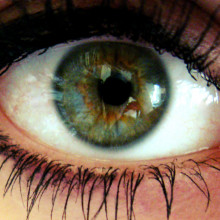
16:09 - Is that face male or female? Look into my eyes, not around the eyes...
Is that face male or female? Look into my eyes, not around the eyes...
Researchers in Massachusetts this week have discovered that the ability of our brains to determine whether a human face is male or female is affected by where in the field of view they appear.
So for example, a typically male face in the centre of our vision might be interpreted as a female face when it appears left-of-centre.
In the real world this isn't usually a problem because we have so many other cues about the gender of the face's owner. Features like hair, clothing and body shape can all contribute to our conclusions as to whether a person is male or female.
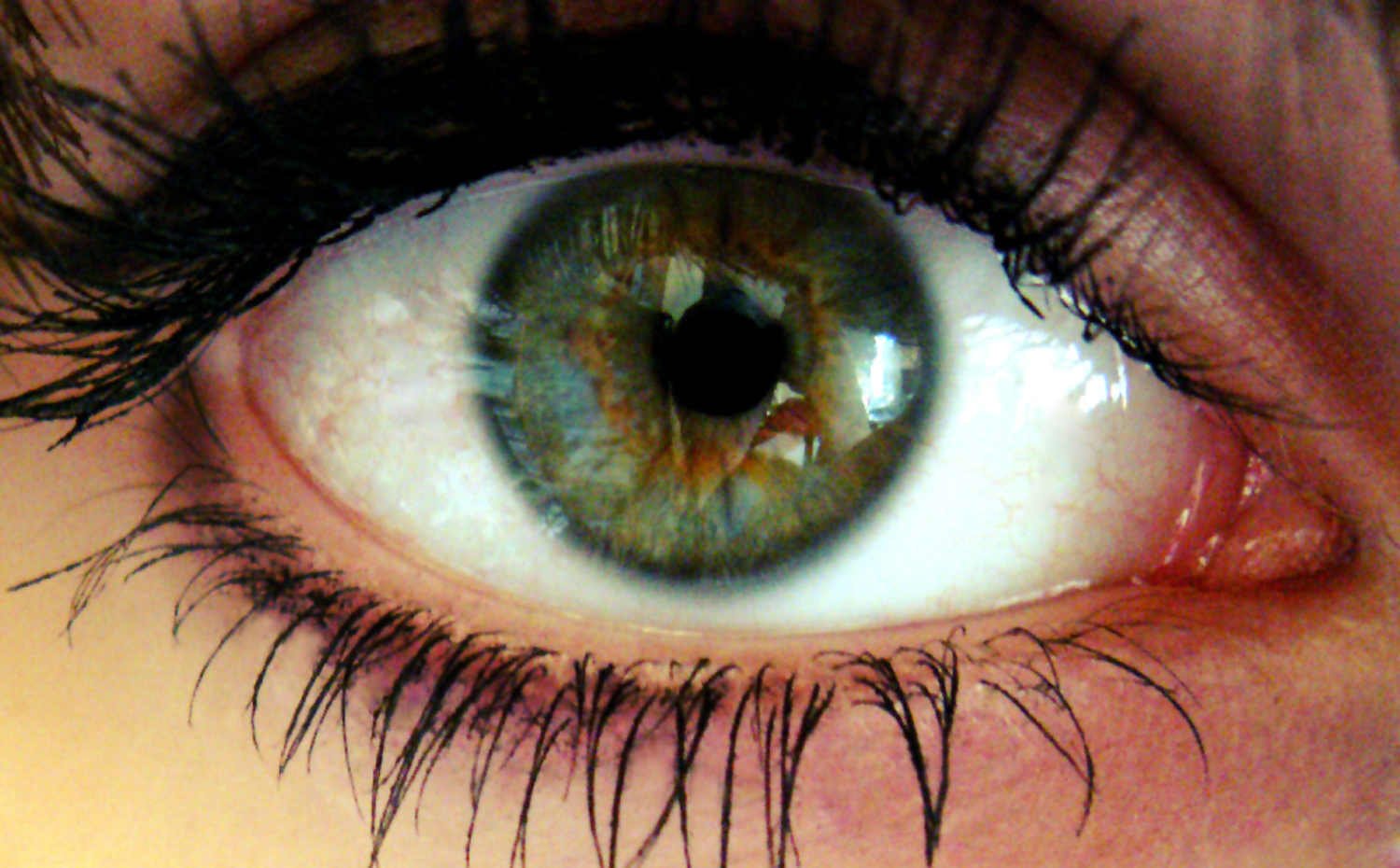 The researchers removed all these extra cues and used computer-generated faces, which made a spectrum of very male to very female. These faces were shown in random order to study participants, of which there were 11.
The researchers removed all these extra cues and used computer-generated faces, which made a spectrum of very male to very female. These faces were shown in random order to study participants, of which there were 11.
Aresh Afraz and colleagues ensured that each face was displayed for 50 milliseconds and that the subjects kept their gaze fixed on the centre of the screen. The subjects were asked to assign a gender to each face. What they found was that, while gender judgements were consistent for those faces in the centre of the visual field, those faces lying off-centre received different judgements. And the tendency of each subject to judge an off-centre face as male or female seemed to be specific to the subject.
What Afraz think this means is that this comes down to how our visual cortex is organised. The visual cortex is the part of the brain that interprets images and inside it cells are grouped according to the part of the visual field that they interpret. So Afraz' conclusion is that the visual cortex has a limited number of neurons per visual field area that it uses to assign gender. If the image is small and is interpreted by one part of the visual cortex, it can come to a different conclusion than another part might make.

19:07 - NASA has found a moon with a mostly oxygen atmosphere
NASA has found a moon with a mostly oxygen atmosphere
One of the most unusual things about the Earth is the large amount of oxygen in its atmosphere, which isn't stable and is only there because plants keep producing it.
The Cassini probe orbiting Saturn has discovered that Saturn's moon Rhea has an atmosphere made of mostly oxygen, and 30% carbon-dioxide. Unfortunately this doesn't mean that captain Kirk could beam down there and be comfortable in his polyester jump suit, and it doesn't indicate that there is a colony of plants down on the surface photosynthesising.

' alt='Saturn's moon Rhea' >Rhea's surface is mostly made of water ice at -180C, and it is getting irradiated by particles of solar wind trapped by Saturn's magnetic field. This breaks up the water releasing oxygen, which is forming the atmosphere. There is also some carbon dioxide being released, possibly from deeper within the moon. Whilst the atmosphere is 100km thick there are still only a few tonnes of oxygen spread out over the whole moon, which if it was on the earth would just fill a large building, so compared to earth's atmosphere it is immensely tenuous.
So this certainly isn't the big story it first sounds like, but it does show that when looking for life you have to be careful when interpreting what atmospheres are made of as there are lots of strange forms of chemistry that can go on without life being involved at all.
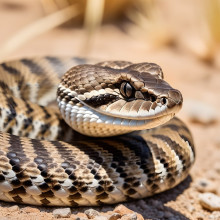
How do snakes digest large meals?
Diana - Okay, interesting question. First of all, as far as I know, snakes can go about a month between meals, or at least Burmese pythons tend to go about a month between meals. Some might go for even longer. They will eat a huge massive meal, maybe a rabbit, maybe something bigger - I think you've all seen the picture of a snake trying to eat the alligator - and they have special cells which can actually breakdown even the most complex parts of an animal, even their bone. There's a study a couple of years ago that found that snakes could actually digest bones of rabbits. They have cells which are shaped like golf tees which do this, which seem to be singular only to snakes. Also, there was some fantastic CT scan photography that was put on the website of the BBC quite recently which showed a rabbit, actually travelling through a snake and it took 130 hours for this rabbit to get digested. But in between meals, there's nothing inside the snake, so there's no food to go off.
How is bone marrow turned to blood?
Chris - Bone marrow is found in the bone marrow cavity of bones, so if you cut across a bone and have a look, you'll see there's a sort of hole in the middle with lots of plates of bone which jut out into that hole, and those plates in healthy bone are covered in stem cells. These stem cells are dividing very, very fast to produce new blood cells. In fact, the body destroys something like 1011 cells every single day and makes another 1011 cells every single day, and that's just red blood cells. In fact, we worked out over the course of lifetime, that you make a quarter of a million kilograms -a quarter of a ton of new red blood cells over the course of a whole lifetime, so it's a very fast process. And these cells are just dividing all the time and pumping out daughter cells which then slowly, over a course of maturations, turn themselves into the new blood cells. This includes platelets as well. You have big cells called megakaryocytes and those megakaryocytes bleb off little bits of their cytoplasm, the stuff inside the cell, which become these little bits that floats around inside the blood, and they're what causes you to be able to clot if you have a hole in the blood vessel, the platelet would stick on, and it causes the blood to clot. And then you have white blood cells as well, lymphocytes. They're also made by stem cells in the bone marrow which then go out from the bone marrow, go around the body, and turn into mature immune cells.

How much does the Earth weigh?
Chris - The stated weight - mass, we should more accurately, of the Earth is about 6 x 1024 kilograms. In other words, if you turn that into tons, it's 6 with 21 zeros after it, tons. So pretty heavy, but the big question is and this is where Dave can help me out, how do we actually know that something on the scale of the Earth that we can't physically put on a pair of scales, how do we know how much that weighs because, as Archimedes famously said, "If you give me a lever long enough and somewhere far enough away to stand, I could lift up the Earth" But how would we have calculated how much the Earth actually weighs, Dave?
Dave - Well, the simple way of doing this is because anything with a mass affects everything around it due to gravity. If it's something roughly spherically symmetrical, you can assume that all the mass is in the centre of the planet and it behaves as if it was all the mass is right in the centre, due to some neat bits of maths. Basically, what you have to do is - if you know how much gravitational force a kilogram of anything will apply to another kilogram of anything, and you know how much force a kilogram of substance is being attracted to the Earth and you know how big the Earth is, you can work out how much mass must be in the Earth. The second part of that is really easy. Working out how much force a kilogram produces is really difficult because it's about 10-11 Newtons at a metre between 2 kilograms. It's an incredibly tiny force and it wasn't done until near the end of 19th century.
Chris - Henry Cavendish, wasn't it?
Dave - Yup, indeed. And you can work it out, and then from that, you can work out how heavy the Earth is, and from that, how heavy everything else is in the universe really...

27:07 - Do head lice like dirty or clean hair more?
Do head lice like dirty or clean hair more?
Diana - The NHS claims that actually, yeah head lice do prefer clean hair, but we were talking about it earlier and from an evolutionary perspective, it seems to make much more sense that lice might have developed and evolved with humans before they'd invented shampoo. So I think it's just as likely that they like dirty hair and I'm sure there are lots of people with filthy hair that have lice in their hair as well.
Dave - Unless of course we're secreting something which kind of slows them down or makes it harder for their eggs to stick to hair or something. I don't know anything about this, but human hair oils might actually be quite good at slowing down head lice.
Chris - And your argument would be, if you wash the hair with shampoo, you actually wash away that natural protective effect and the consequence of that would be that the nit would find it easier to infest you.
Dave - Yeah.
Chris - In other words, if you've got clean hair.
Dave - And purely because we've been living with them for so long, it would make sense we've evolved in some way of discouraging them.
Diana - It's quite possible.

Why do the male private parts shrink in cold weather?
Chris - There is actually a physiology behind this. It's not just people claiming this and making up. It is true, honest.
The reason for this is, in fact, the rate at which sperm is made in the testes occurs optimally at a temperature which is 1 degree below body temperature, so about 36 degrees where normal body temperature is 37 degrees C. That's why they dangle down in a little bag to keep them a little bit cooler than body temperature.
Sperm actually can be stored and live quite happily at a higher temperature, and so that's why, when a sperm has been made, it can survive inside the female genital tract. But the actual synthetic process occurs better at the lower temperature and that's why the testes are dangling down.
You have enveloping, or wrapping-around, the testes in the scrotum muscles called the cremaster muscles; there's a reflex called the "cremaster reflex", which shortens those muscles to bring the testes up closer to the body when they're cold and also when you're scared, for obvious reasons! Because terror can mean you have to run away, or you might get booted somewhere sensitive, so you can elevate them out of harm's way.
So, you can bring them up closer to the body when you are cold and you drop them down a bit when you are too hot to keep the temperature right for making sperm at the right rate.
That's why things tend to get closer to the body and therefore appear to shrink when it's cold, and they dangle down a bit further when it's a bit warmer. So there is some real sound science behind this!
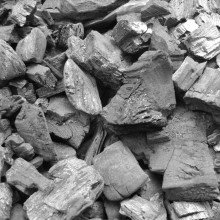
30:55 - Planet Earth Online - Friendly Fires
Planet Earth Online - Friendly Fires
with Andrew Scott, Royal Holloway University of London
Diana - In July this year, five devastated a Surrey beauty spot. Fire fighters from three counties tackled the blaze on Frensham Common but 86 acres of heathland were reduced to a scene of blackened devastation. It may take up to five years for the affected land to recover, but not everyone views fire as a destructive force. Planet Earth podcast presenter Sue Nelson joined Paleobotanist Andrew Scott from the Royal Holloway University of London on the charcoaled remains of the blaze, to find out how fire can also bring the past to life...
Andrew - You can notice as we're walking, your feet beginning to crunch although it's a bit damp today. Lots and lots of different sizes of charcoal here.
Sue - Now you've just put a trowel into the ground there. It almost looks like the sort of beautiful dark and composty peat that you might buy from a garden centre.
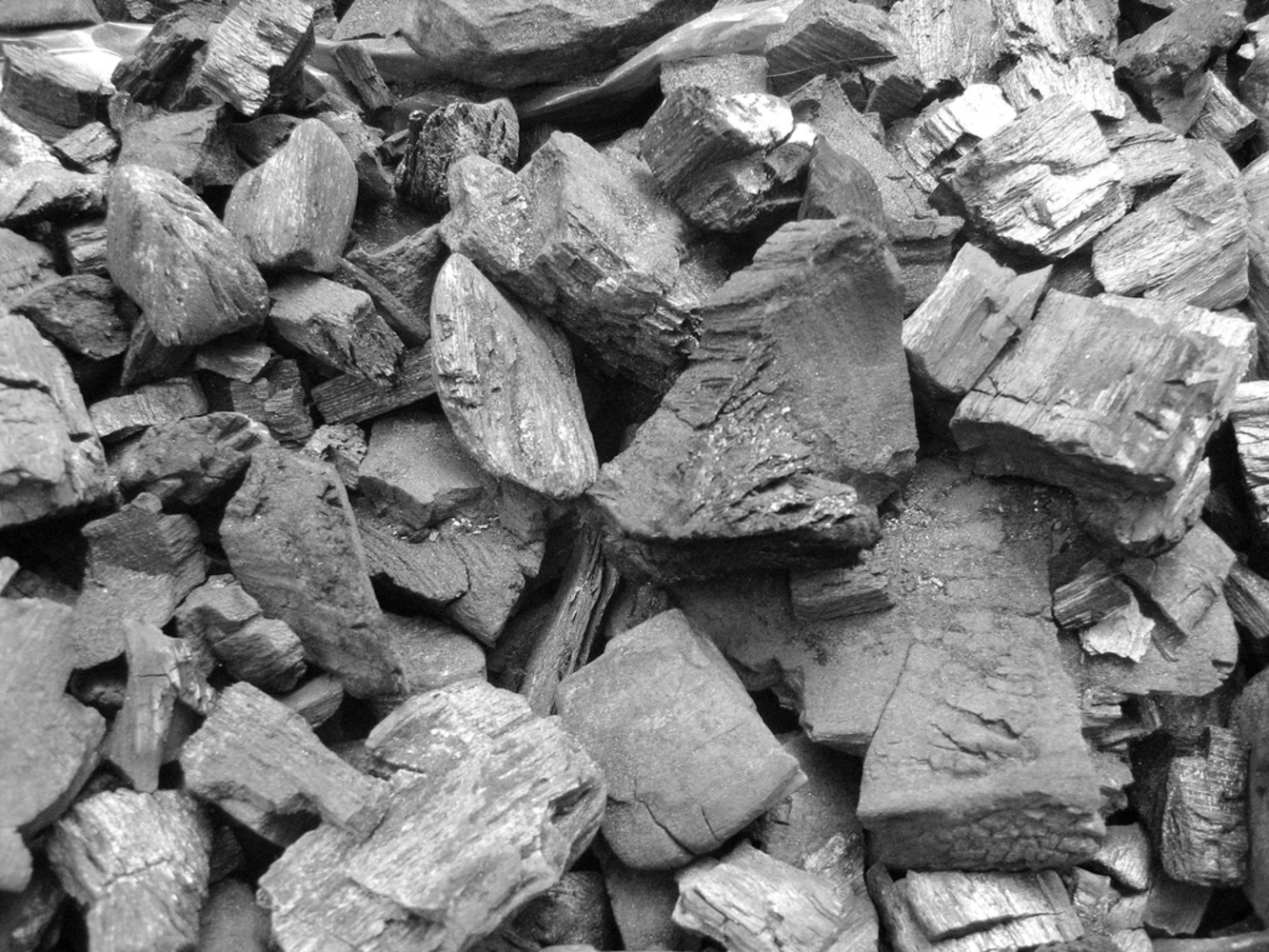 Andrew - Yeah and so, you'd probably think, "This is terrible stuff." But in fact, this is preserving the plant material as charcoal. What I consider fire as, is that if you like a preservational mechanism for fossil plants because in many cases, this charcoal now is the cell walls have been converted to nearly pure carbon, and that material can get buried and survive for millions of years. Not only that. The anatomy of the plants are still preserved in the charcoal.
Andrew - Yeah and so, you'd probably think, "This is terrible stuff." But in fact, this is preserving the plant material as charcoal. What I consider fire as, is that if you like a preservational mechanism for fossil plants because in many cases, this charcoal now is the cell walls have been converted to nearly pure carbon, and that material can get buried and survive for millions of years. Not only that. The anatomy of the plants are still preserved in the charcoal.
Sue - It's hard to see how anything could be preserved in what looks like the remains of a fire grate.
Andrew - Yes, I know. It's sort of almost counter intuitive, isn't it? If you take this back, and we will, we'll take it back to the lab and look under the microscope. You'll see that all of the different tissues of the plants are preserved. I'll collect a bag of the material so that you can actually see that I'm telling you the truth. One of the problems of course is that this material, as you commented, who would think of collecting that stuff? And so, one of the things we have to do is persuade people that this is incredible material. It tells us not only that there was a fire here, but we can tell what was being burned.
...
Sue - A short drive away and we're now in Andrew's offices. We've brought some of the charcoal with us, and you've got a microscope here.
Andrew - So I'm just going to take some of the sample out.
Sue - A spoonful there. A bit like spooning out some tea, isn't it?
Andrew - Sometimes they're often called fossil tea leaves, I think for some people anyway.
Sue - Oh my goodness! You can see textures, almost like tiny seeds.
Andrew - This is rather wet and clumped together, but one that I collected earlier and dried out, I think if I show you this under the microscope...
Sue - You're using a very fine tipped paintbrush now to sort through the powdered charcoal.
Andrew - Yeah. I'll just turn it around.
Sue - That looks like a clove in that it's got a little stick and a roundish head with two little pins-like protrusions from the top.
Andrew - That's a charred heather flower.
Sue - Gosh!
Andrew - So let me find you another bit of the heather. This is another one of the flowers that's actually opened up.
Sue - That almost looks like a miniature black rose bud.
Andrew - Yeah, it's amazing.
Sue - So the charcoal is a treasure trove as far as you're concerned, but why is it important to examine the remains of these plants?
Andrew - Our thoughts about charcoalified flowers started with the discovery by Else Marie Friis and colleagues in Sweden of some cretaceous material, in which they discovered these tiny little flowers preserved as charcoal. This was a period when flowering plants first started. We know that many of the flowering plants were small, shrubby, weedy forms, and they survive well in disturbed habitats. But the other thing to know is of course, fire is a major disturbance and if you've got regular fires, then these weedy plants can do very well. They come back very quickly. If the fire return interval is quick enough, you prevent any trees growing. But the question is, why in the cretaceous and why is it so interesting? We know from experiments that if you have changes in atmospheric oxygen, that can affect fire. Because if atmospheric oxygen falls below 15% you don't get fire, it gets put out. If you have much above the present level, you can begin to burn wetter and wetter plants. So the idea we had was that if you look in ever wet environments, if you have increasing amounts of charcoal, it may indicate that oxygen levels are increasing. So we've just published our research which tries to use this as a proxy of atmospheric oxygen through time. Now it turns out that the cretaceous, this period when flowering plants first got going, was a time of high oxygen. So we believe that there were many more fires that could burn. They promoted, if you like, the spread and diversification of early flowering plants.
Diana - Andrew Scott from Royal Holloway University of London, talking to Planet Earth podcast presenter, Sue Nelson.

How does a drinking straw work?
Chris - It's something we all just take for granted, isn't it? You'd put a straw in and suck up a drink or something; but what's actually happening?
Well the answer is, by changing the shape of your mouth, you're actually getting the atmosphere to do the work for you. What you do, when the straw goes into your mouth, you close your lips around the straw, which seals off the outside world from the inside of your mouth; and you then change the shape of the inside of your mouth by lowering your tongue or drawing it towards the back of your mouth. This is a bit like pulling the plunger out of a syringe. You increase the volume inside your mouth, which means the pressure goes down; and it goes down so that the outside world has a higher pressure than the pressure in your mouth; this pushes on the drink surface, forcinging the drink up the straw and into your mouth.
The reason you can still breathe is because actually, you're not breathing through your mouth. You're breathing through your nose; the nas and pharynx (throat) connect at the back of your throat and that's not where this volume change is going on because you sealed off the back of your mouth with the back of your tongue.
So, you've got this closed cavity that you take drink into and then you push it down your throat in order to be able to swallow.
That's basically how a straw works, and it's not too dissimilar really to when you're getting oil out of the ground: when you've got an oil well, unless it's under high pressure, what you do is pump something more dense than the oil (like water or mud) down into the well where it sinks beneath the oil and pushes it up above it; the oil then gets displaced back up towards the surface.

Do sea shells all spiral in the same direction?
Diana - It sounds like you've got a right-handed shell there which is called a dextral shell. You do get other shells which are left-handed and they're more sinister called the sinistral shells, but there's no real obvious reason why you get more right-handed shells right now than you do get left-handed shells.
Many people think that if you have all shells within a certain population, which are the same "handedness", it's much easier for them to mate with each other.
So, therefore, if you get one turning up that's left-handed, it's going to be difficult for the right-handed one to mate with it.
But looking back over paleontological records, you do get periods when more left-handed shells appear and then you get periods when more right-handed shells appear, and it just seems to be something that fluctuates and changes with time.
At the moment, we're getting mostly right-handed shells...

Why does dishwashing soap make bubbles?
Dave - It is related to surface tension, but it doesn't work very well with pure water because a bubble is a very, very thin layer of water; And with normal water, the surface tension is so strong that it tends to be incredibly unstable.
This means that It will just all form down into a droplet and pop the bubble before it's even really formed.
But what you do to make a soap bubble is add some kind of detergent or soap. Soap or detergent molecules tend to have a "head" region, which really loves water and is very charged, and a "tail" region, which is very, very oily and doesn't like water at all.
So the tail region is very, very good for dissolving fats when you're doing washing up because all the tails stick in the fat.
But that would mean you'd have something - like oil - which doesn't mix with water. So you surround it with lots of water-loving heads, so it's then soluble in water and you can dissolve the fats and clean your washing up.
But these head regions also tend to stick on the surface, so all the water-hating tails tend to cover all the surface of water, and deeper inside the water, you tend to get kind of little vesicles, so little spheres with all the tails pointing inwards in the water-loving heads surrounding the outside.
This means that if you increase the surface, just some of these vesicles kind of get pulled up the surface and they can keep creating surface really, really easily.
They stabilise these very, very thin films of water, soap bubbles. And so, because you've got all this detergent in there, you get this great big thin films of water with a layer of soap on one side, then a little layer of water, then a layer of soap which is really quite stable, and will last a good couple of minutes.
How does giant hogweed change skin and damage it?
Chris - Giant hogweed produces a chemical which is actually used to treat psoriasis, and that chemical is psorolene. Psorolene gets in through the skin. In fact, if you take it into the body, it goes all around the body and goes into pretty much every cell in the body. But it's a photosensitising agent which means that a cell that's got it in can absorb light of certain wavelengths, and it produces a toxic chemical when it's interacting with light, and that toxic chemical can kill the cell.
So, this is why, if you take it into your body or you get it into contact with your skin, the skin cells where the contact occurred become very photosensitive, and then when you go out into the open, there's enough ultraviolet light, just even at low levels on even a cloudy day to interact with the drug that's in the skin, damage cells in the skin and it gives you an exaggerated sunburn.
That's actually an interesting phenomenon because people have now been able to take that out of nature and apply it to a medical condition, psoriasis, in order to get rid of some of the psoriasis lesions by putting people in basically a sun bed, and a dose of psorolin into the sun bed, and the rapidly dividing cells are more sensitive than normal cells, and so they tend to die off faster. And so, that's how you treat your psoriasis.
Why is an unopened carton so much harder to shake?
We took this on as this week's Kitchen Science!
Are falling bullets dangerous?
Chris - Oh yes, they certainly will be. After Saddam Hussein pulled out of Kuwait - when he first invaded Kuwait, if you remember back at the first Gulf War, there were actually a number of people who got killed by people who went out in the streets and fired their guns straight up in the air. And the bullets that came back down again killed people. And you'd might think, "Well, why? They're just falling bullets." But the point is that the bullet is given a degree of energy by the gun and that bullet will convert that energy as it goes up into the air, into gravitational potential energy and it will slow down in the process. But then it's got enormous amount of potential energy. It will then fall back down to Earth and there will be some losses because the bullet is interacting with the air which will have frictional effects, and slow it down a little bit. But at the same time it will end up coming back to the ground, because bullets are pretty streamlined, at almost the same speed it left the gun. So it will come cannoning down into your head if you're underneath it, at the same speed it left the gun. You're effectively being shot from above, so very, very dangerous. Never do it.
Does it weigh less to transport flying birds?
We answered this with regards transporting birds in aeroplanes...
Dave - Not for very long. Basically, birds hold themselves up by pushing air downwards and so, as they push air downwards, they get an equal opposite reaction, they're held upwards. The problem is that the air is going to keep on moving downwards until it hits something else. If it were in a plane, it will hit the bottom of the plane and therefore, that air will get slowed down and it'll transfer exactly the same force to the plane. So for the time it takes for the movement of air to get from the bird to the plane, the plane will weigh less but as soon the air hits the plane, then it will go back to what it weighed before.

Did cave-men hunt and cave-women cook?
Diana - Well the answer is, we don't really know. It's something that palaeontologists have argued over and argued over for years and years, and years. But it all hangs around a thing called division of labour. The idea of that is you have certain groups of people doing certain types of jobs, and if you can divide people according to certain rules say, their gender or their age, or something like that then it might mean that they do a specific job. But of course, finding that in the archaeological record is actually really difficult because you'd have to have a certain group of people fossilised along with the job they were doing, and you'd have to have it repeated over and over to show that it was happening in this society. So the answer is, we don't really know what was happening all those years ago because it's in pre-history. You can look at cave art perhaps, but even then, how do you interpret some figures as male or female? Quite often, the cave art isn't very easily identifiable in terms of gender. There was one theory that one guy came up with a few years ago who said that the Neanderthals actually became extinct because the women took part in hunting far too much and therefore were not able to bear children because they got killed off.
Chris - Rather likely archaeologists in palaeontology that probably made that comment, who were probably blokes, I would think!
Diana - Yeah. This was definitely a man who said this, but I mean, it's certainly possible that women in Palaeolithic times did take part in hunting. We don't know that they were busy making babies all the time. It looks like population was actually quite low.
Dave - Can you compare it with modern Stone Age peoples?
Diana - You'll get into trouble for calling them Stone Age, but yeah, I know what you mean.
Dave - I'm sorry.
Diana - They do make comparisons. It's called ethnographic comparisons. So what you do is you look at hunter gatherer groups in say, South Africa, or South America, or in Papua New Guinea, and look at how they divide up their labour. And actually, it's quite a mixed picture. Sometimes you get very matriarchal societies where the women are in-charge and the women go out and hunt and gather, and sometimes you get patriarchal societies, societies where the women stay at home and the men do do the hunting. So, who knows?
What is the temperature of a perfect vacuum?
Dave - That is a very good question. It is often not very well defined. For something to have a temperature, it's got to have something in it to measure the temperature of. A perfect vacuum with no atoms, you can't measure the temperature of the atoms. So what's left in the vacuum? Quite often, there's light going through the vacuum, there's photons. I don't know of anywhere in the universe with not many photons there. So, you could try and measure the temperature of the photons. The problem is quite often that photons don't have a well-defined temperature. They're not interacting with each other or averaging out enough. So, sometimes there'd be lots and lots of very high energy photons. There might be a be load of x-ray photons and not very many microwave photons. So, you can do it on the photons, but often, it's not very well defined.
How does elevation affect how far away the horizon appears?
Chris - Well let's assume your skyscraper is standing in isolation, so it's not going to get your view blocked by an adjacent building for instance, so there's no get out clauses like that. It's a building in isolation in the middle of nowhere. There's a sort of approximation for distance to the horizon, which is 1.23 times the square root of the height of your eyes above the ground in feet. So you could work out, using that little rule, how much further you're going to see if you go up the height, in feet, of one storey in a building, and then you could keep doing that to work out how much further you're going to be able to see to the horizon from the top of the building than the bottom, for example.

How accurate is GPS for measuring speed?
Dave - The two devices are measuring speed in very different ways. The speedometer is measuring the number of times your wheels turn every second or every minute, and if you know the circumference of your wheels you can work out how fast you're going.
There can be errors on that because the tyres will wear down, that will change the circumference of your wheels. Quite often, I think they build speedometers to possibly slightly under-read, which is quite good because that way, you get less speeding tickets.
Old-fashioned speedometers also weren't as accurate as modern ones. They weren't computerised and they just tended to be less sensitive at high speeds.
The GPS is basically measuring your position repeatedly and measuring how far you move over a certain period of time and then dividing that distance by the time it's averaged over, and then that will give your speed.
If you're stationary, the GPS will quite often give you a speed, so the GPS is not at all accurate in giving a speed when you're going very, very slowly because the errors in position can be a few metres. And the accuracy of the speed will depend on how long it's averaging over to get the speed.
So if it's averaging for 10 minutes the GPS will be more accurate, if it's averaging over 2 seconds the speedometer will certainly be.

54:35 - What happens as the universe expands?
What happens as the universe expands?
We put this to Carolyn Crawford, from the Institute of Astronomy at Cambridge University... Carolyn - The most straightforward part of that question is, how fast the universe is expanding now because this is something we actually measure. We call the current rate of expansion something called the Hubble constant, and that is really just a measure of how fast bits of the universe are moving away from us as a function of their distance. As you go further out away from the Earth, bits of the universe are travelling ever faster. For example if you go to 30 million light years away, maybe you've got a bit of universe receding away from us about 700 kilometres per second, go 10 times further to 300 million light years away, it's receding at 7,000 kilometres per second, and if you carried on going further and further away, yes, you do get a point where you're far enough away and that bit of the universe is moving away from us at speeds greater than the speed of light. So it is not a fundamental speed limit.
The key thing here to realise is that the expansion of the universe is caused by stretching of space and that can be at any speed it likes, much greater than the light speed. The thing that is constrained by the light speed is the rate that things can move through space. So the expansion of the universe is the stretching of space, and it's carrying the galaxies along for the ride, but any light, any signal or information from those galaxies can't travel faster than the speed of light.
In fact, the expansion of space is not constrained by how fast it's moving. It's constrained by how much stuff is in it, and that's going to determine whether the universe will contract or carry on expanding forever.
Diana - If space objects are moving away from us at a speed faster than light then the lights from them cannot travel fast enough to reach us.
Carolyn - All the evidence currently is that this expansion is getting ever faster and the universe is going to carry on expanding forever. The speed at which it expands isn't affecting the eventual fate of the universe, but what it does affect is what we can see of that universe, and how much of it we can see because if a galaxy is moving away from us faster than the speed of light, that means any photons of light leaving it can't travel across the space fast enough. It can't outrun the expansion of space. And so we have something called the observable horizon. Anything that's expanding further than the speed of light away from us, we will never see the light from those objects. And as the universe gets bigger and bigger, that horizon is going to shrink and we're going to see less and less of the universe, and that's really what's going to be affected by this expansion speed.
Diana - But what about that crunch theory?
Carolyn - Whether or not the universe actually collapses back down on itself depends on how much matter there is in the universe and how much stuff there is to pull it back together under gravity, and really, the current cosmological thinking is that with the presence of dark matter and dark energy, the universe is not going to contract. It's going to carry on and expand. It's going to expand faster and faster, and never go back to that big crunch at the end.
Diana - Current thought is, the universe will just keep expanding. To sum up, objects are moving away from us in space as space stretches, meaning that they can travel away from us faster than the speed of light. But those objects cannot move through space faster than the speed of light.










Comments
Just because we, as humans,
Just because we, as humans, don’t possess the ability to measure speeds beyond the speed of light, doesn’t mean it’s not possible for objects, in the unknown expansion of our universe, to travel beyond what we are capable of understanding.
Add a comment